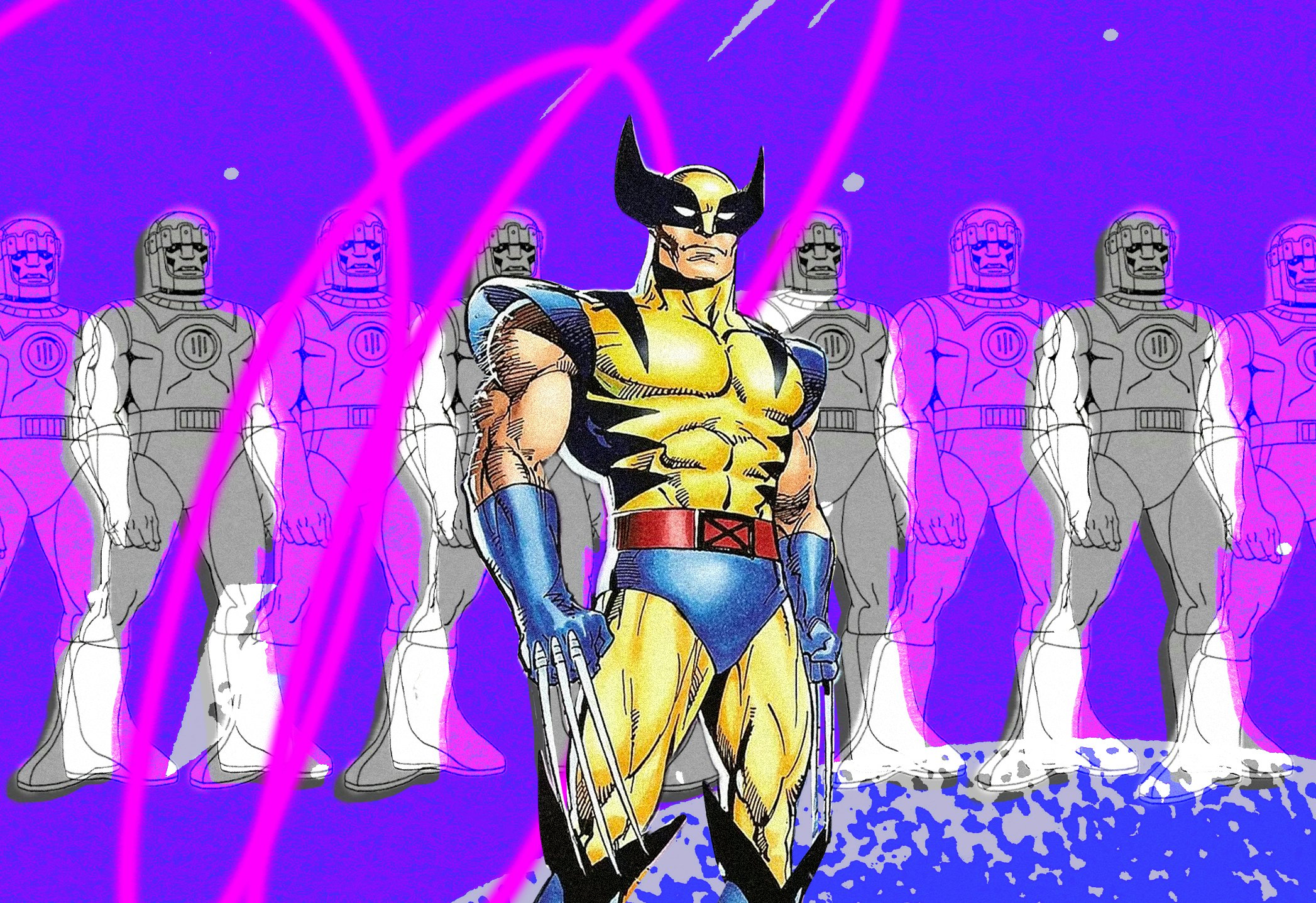
Thirty years ago, the world met the X-Men.
Although the comic book characters debuted in 1963, in the early 1990s, awareness of the property wasn’t as widespread as superheroes like Spider-Man or the Fantastic Four. There had been no movies or television shows about Marvel’s mutants. Hollywood was skeptical about the marketability of the superpowered team of outcasts.
The most notable exception was Margaret Loesch. From 1984 to 1990, Loesch was the president and CEO of Marvel Productions, and during that time, an X-Men cartoon became her passion project. She even financed a pilot for the X-Men in 1989. While Pryde of the X-Men failed, Margaret didn’t stop believing in the X-Men. So when she became CEO of Fox Kids in 1990, she returned to the property.
“I identified with the X-Men,” Loesch tells Inverse, “I believed in the show, even when Fox was telling me I was risking my job over it.”
The result was X-Men: The Animated Series, the groundbreaking cartoon that ran for five years and became a runaway success. The series catapulted awareness of the X-Men and set the stage for the X-Men films, which, of course, led the way to a revolution in comic book movies. The show was so successful that now, 30 years later, a reboot is in the works titled X-Men ‘97, which picks up right where the original left off.
X-Men: The Animated Series debuted on October 31, 1992 with part one of a two-part pilot called “Night of the Sentinels.” The story centers on Jubilee, a teenager discovering her mutant powers. After her foster parents report her to a non-government organization that promises to help, she’s suddenly terrorized by towering, mutant-hunting robots. Jubilee soon meets the X-Men and learns what it means to be a mutant.
It was a mature, complex story about prejudice and discrimination that set the stage perfectly for the series that was to come. To mark the occasion of 30 years since the cartoon’s debut, here, talking to Inverse, is the creative team behind X-Men: The Animated Series and its pilot “The Night of the Sentinels.”
Assembling the team
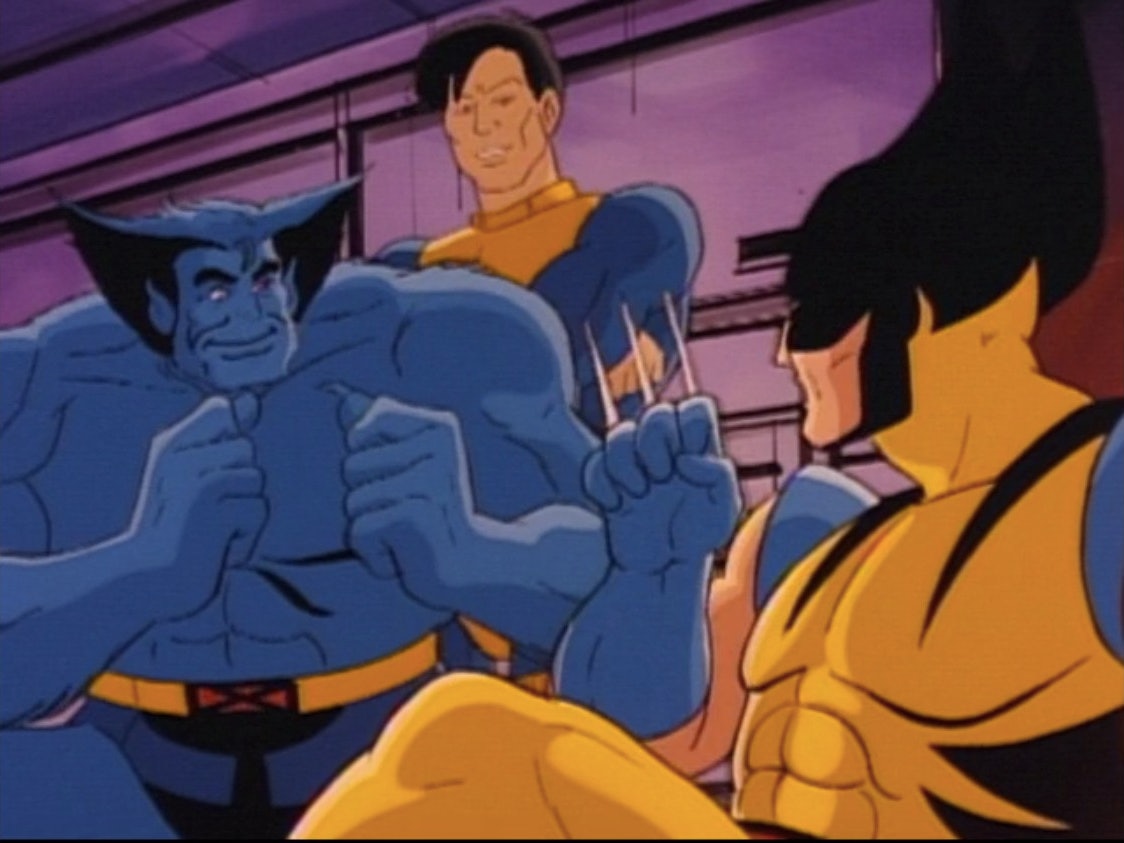
Margaret Loesch: I first heard of the X-Men as an adult in the 1970s when I met Stan Lee. I had been a comic book fan as a child but it was mostly DC, not Marvel Comics. But when I met Stan and began working with him, I loved asking him questions about how he and Jack [Kirby] came up with things. He would always give answers that were very intriguing. Through those conversations, we talked a lot about the X-Men because Stan was a big fan of the X-Men.
I was intrigued by X-Men because it was so different from anything I had been exposed to. This was in the 1970s and the X-Men I first became exposed to were the comics where the X-Men themselves were teenagers. I was enthralled with the idea of these disenfranchised youths who were dealing with all the problems we see today for people who aren’t accepted for their differences.
I had an immediate identification and empathy for the X-Men and, when I joined Fox [as the head of programming for Fox Kids] in 1990, the show was a priority for me after we got past our first year of programming.
“I was intrigued by X-Men because it was so different from anything I had been exposed to.”
Larry Houston (Producer Director on X-Men: The Animated Series): I’d started at Marvel Productions about a decade before X-Men. I’d worked on Spider-Man and His Amazing Friends and shows like that. Whenever one of these shows had a sequence with one of the X-Men, I’d grab that clip to compile them to use as a marketing tool for an X-Men series.
Stan Lee and Margaret Loesch were the two executives at Marvel who believed in the X-Men as a series. In 1989, she found the money to do an X-Men pilot, Pryde of the X-Men, which I was one of the co-directors on. We put our best foot forward with that show, but it didn’t sell.
About six years later, Margaret had become the CEO of Fox Kids Network for Saturday mornings and she called me up and said “Larry, we’re doing the X-Men and I want you to be a part of it.” I’d been trying to get the X-Men on the air since the 1980s, so, of course, I said “Yes!”
Eric Lewald (Executive Story Editor on X-Men: The Animated Series, Author of Previously on X-Men: The Making of an Animated Series): The first big meeting to discuss X-Men: The Animated Series took place on February 17, 1992 at the Saban building in Toluca Lake. Everyone was there, including Fox TV Network executives, people from Marvel comics, artists, producers, animators, marketers, and financiers. Even Stan Lee.
I’d been hired just twelve hours earlier by Fox executive Sidney Iwanter to be in charge of writing the show. The problem was, I knew next to nothing about the X-Men so I just kept quiet during that meeting to hide my ignorance.
Mark Edward Edens (Head Writer of X-Men: The Animated Series): I was hired along with Eric, as we’ve worked together on many shows. The problem was, Fox only budgeted for one story editor, so they suggested we do it together and split the fee. Well, we didn’t want to do that and Eric always liked going to meetings more than I did — I just like to sit down and write — so Eric became the story editor and I became the head writer.
“We only had three weeks to write the first draft.”
Lewald: After that first meeting, I started to get caught up on the X-Men. I bought some trading cards and an X-Men board game. Larry Houston also gave me a copy of the 1988 Marvel Universe coffee table book, which was about 400 pages of all the characters and their powers and their history. Mark and I both educated ourselves that way, which we had to do quickly because we only had three weeks to write the first draft.
Choosing the roster
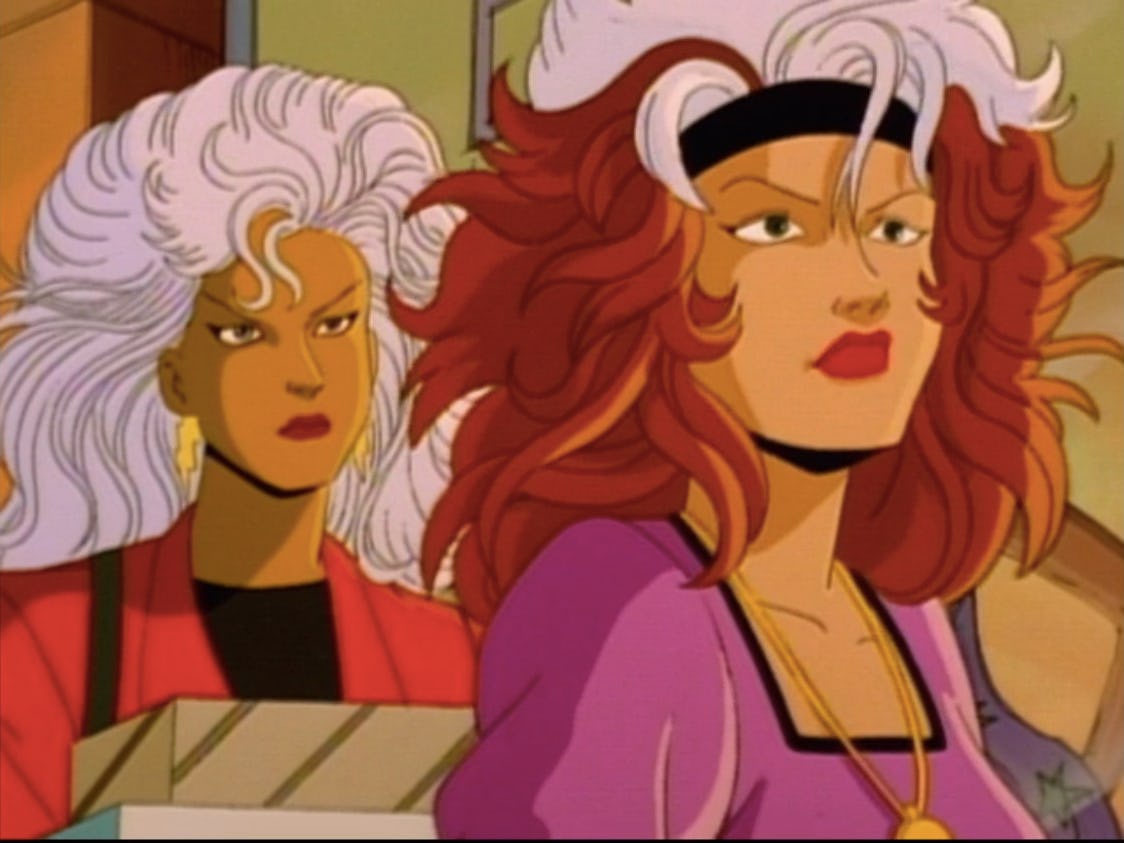
Edens: One of the first things we had to do was figure out who was going to be on the team. Right away, we knew we needed Wolverine because he was the most popular character and we had to have Cyclops because he was the leader and there was a built-in conflict there.
Lewald: There were a few different factors at play in determining the lineup. From the writers’ perspective, we wanted the eight most distinct characters we could have. We also wanted a diverse array of powers. We also had to consider who Marvel wanted. Gambit, for example, was a newer character and they wanted him.
We also had to consider who was easier to animate. A character that flies is easier to animate than a character who runs. So, the fact that Storm and Rogue could fly gave them a slight edge over other characters we could have chosen.

Edens: Storm’s powers were also really interesting to animate and she could use her powers without killing anybody. She was also a woman and she was Black so there was more diversity on the team.
Maybe the most original decision we made was to add Jubilee to the lineup. She was chosen very consciously as the stand-in for the audience. Most people hadn’t heard of the X-Men so we needed someone who, like the audience, didn’t know who the X-Men were.
“Writers always liked Beast. He’s smarter than everyone else, which writers always think they are.”
Lewald: If you look at some of the early promotional art for the cartoon, Beast wasn’t there and Jean Grey wasn’t there. We didn’t think they’d be a big part of the show, but both of them sort of asserted themselves into the show more and more.
Jean became the emotional center of the show. Professor X could talk to her, Cyclops could talk to her, Wolverine could talk to her. Then the love triangle blossomed and, of course, she became a main character.
We also put Beast in jail in the first episode because we thought he’d be a secondary character. But Beast was so different and so thoughtful that he became a lot of fun to write.
Edens: Writers always liked Beast. He’s smarter than everyone else, which writers always think they are, and he can beat up people. It’s a writer’s dream. Also, we could have fun with the dialogue and look up quotations and throw them in there.

Lewald: Even Xavier, oddly enough, wasn’t going to be a big part of the show at first. We were thinking about kids and we were wondering if this 55-year-old guy in a wheelchair was really going to fit in that much. But the more we were writing stories the more he became the show’s idealistic center, so he had to be there.
Edens: Then there was Morph, who we put in because we really wanted to kill somebody — that's what animation writers always dream of, killing a character. It ramps up the emotions and you want there to be real danger and nothing is more real than that.
“We originally picked Thunderbird to die in the pilot.”
Lewald: We needed to show a real sacrifice for the X-Men right away in the first episode. We wanted to show that there was a price to heroism. This would be a bit of a battle later on, because, of course, this was a kids show. Our wonderful censor, Avery Cobern, understood what we were trying to do and let us do it.
Loesch: Avery deserves a lot of credit. She was fantastic to work with because she didn’t say, “No, you can’t do this,” she’d say, “No, you can’t do this, but here’s what you can do.” She’d work with the writers, which was so unusual.
Lewald: We originally picked Thunderbird to die in the pilot, as he had been killed in the comics. He was originally in the script in the Morph role, but before the second draft, someone pointed out that this was our only Native American character, and you’re going to shoot him in the opening story?
So, we looked back at the X-Men who had died in the comics and only like, three or four had and Changeling was one of them. Changeling was in the script for a while, but then we got a note from the attorneys about how DC has a character named Changeling and they didn’t want to use that name. So it was changed to “Morph.”
Loesch: Morph’s death was just one of several difficulties we faced early on. Sometimes when we were already in production, I had a conversation with Jamie Kellner, who was the president of Fox Broadcasting Company, and he was not enthused by the X-Men. He thought it was violent and dark and that it was too much of a departure from what Saturday morning programming had become, which was mostly younger-skewing shows.
“My job was put on the line if X-Men didn’t work out.”
He put his foot down and told me “I don’t think this is a show we should go for.” I was shocked and very concerned because I’d already decided that the only way we were going to succeed as a new network was to counter-program against what others were doing and X-Men was central to that. I won’t go into too much detail, but my job was put on the line if X-Men didn’t work out, even to the extent where my contract was changed. I didn’t tell anyone on the team about it, because I didn’t want to rattle them, but I was very disappointed and kind of rattled because my job was in peril — but I believed in the show.
Writing “The Night of the Sentinels”

Lewald: The pilot is the hardest episode to write and we only had three weeks. Mark and I had been writing together for ten years so we had a shorthand, but that still wasn’t a lot of time, especially since it was going to be a two-parter.
Margaret wanted something more sophisticated. She believed that, if you get something sophisticated enough, you could double your audience by capturing a whole range of people. In time, she’d be proven right because kids watched X-Men, teenagers watched X-Men, and adults watched X-Men.
Loesch: We wanted a two-parter to make it a big story. “Night of the Sentinels” was the perfect introduction to the series because it was really dramatic, there was an emotional hook to it, and one of the characters actually died. That didn’t happen on Saturday morning cartoons.
Houston: The story we’d wanted to do back on Pryde of the X-Men was the Sentinels, but the people who financed the show said “no.” They wanted to do The Brotherhood of Evil Mutants to help with selling a line of toys. Of course, all of the X-Men plus all of the Brotherhood ended up being too many characters to put into a pilot.
So, when X-Men: The Animated Series came around, the writers and artists were all on the same page: we wanted to do the Sentinels. Unfortunately, some of the higher-ups still didn’t want that until the whole creative team said, “If this is what you want to do, we’re the wrong creative team for this show and we all quit.” That made them back off and we got to do “Night of the Sentinels.”
‘If this is what you want to do, we’re the wrong creative team for this show and we all quit.’
Lewald: While I wasn’t well-versed in the X-Men when I began, as I was catching up with the comic books I realized there were, overall, two basic kinds of X-Men stories. One was about them fighting other mutants, but that wasn’t interesting to us because it was so similar to every other superhero show.
The other kind of X-Men story was about X-Men trying to fit in with the greater human culture around them. It focused on their vulnerability. It’s hard to make super-beings vulnerable, but a great way of doing it was to show that people feared them and hated them. For a pilot, we liked that better because it was very specific to the X-Men.
The Sentinels were a great way to do that kind of story because they were the embodiment of human fear and hatred. Also, they’re these 30-foot robots trying to hurt people so everybody understands they’re a menace without much backstory. That meant we’d have more time to focus on the X-Men and get to know them better.
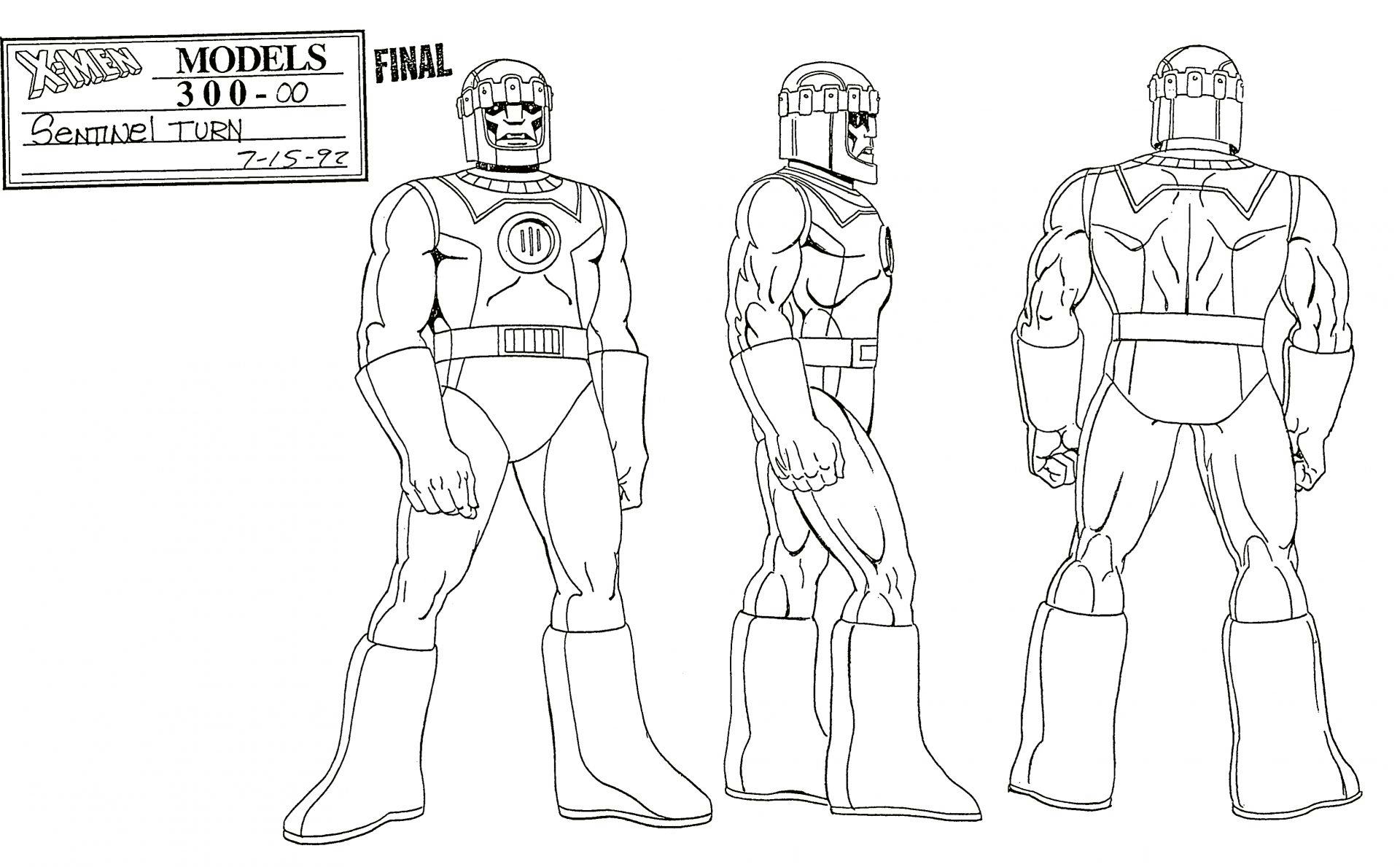
Even still, we ended up running very long with the pilot, so much so that we almost had enough for a three-parter. When it came to the storyboards, we should have had about 600 pages of storyboards, but we originally had about 800, so we had to cut a bunch out.
Around the storyboard phase is also when we had some issues with Stan Lee. See, Stan tried to have a bigger part in this show, but he didn’t really know how to give notes on the scripts. When he started to give notes on the storyboards, it was too late to change anything. We all respected Stan, but we were also told that he hadn’t really been a creative voice at Marvel since the early 1970s. He didn’t know who half of these characters were.
“Stan was gently nudged aside.”
Edens: Stan was thinking more in terms of a kids' show, whereas we thought what we should be doing was what the comic books were doing.
Lewald: Stan thought this was going to be a different show than what we were making and it became an issue. He also fought to narrate the show, like he’d done with Pryde of the X-Men, but [producer] Will Meugniot talked Margaret out of doing that. Margaret loved Stan and wanted to include him, but she also had such a different idea of what the show would be. Eventually, I had to tell them, “It’s me running the show or Stan. It can’t be both of us and we can’t make all of these changes.” We made some changes to make Stan happy, and from that point on, it wasn't really an issue.
Edens: Eventually, Stan was gently nudged aside.
Casting the X-Men
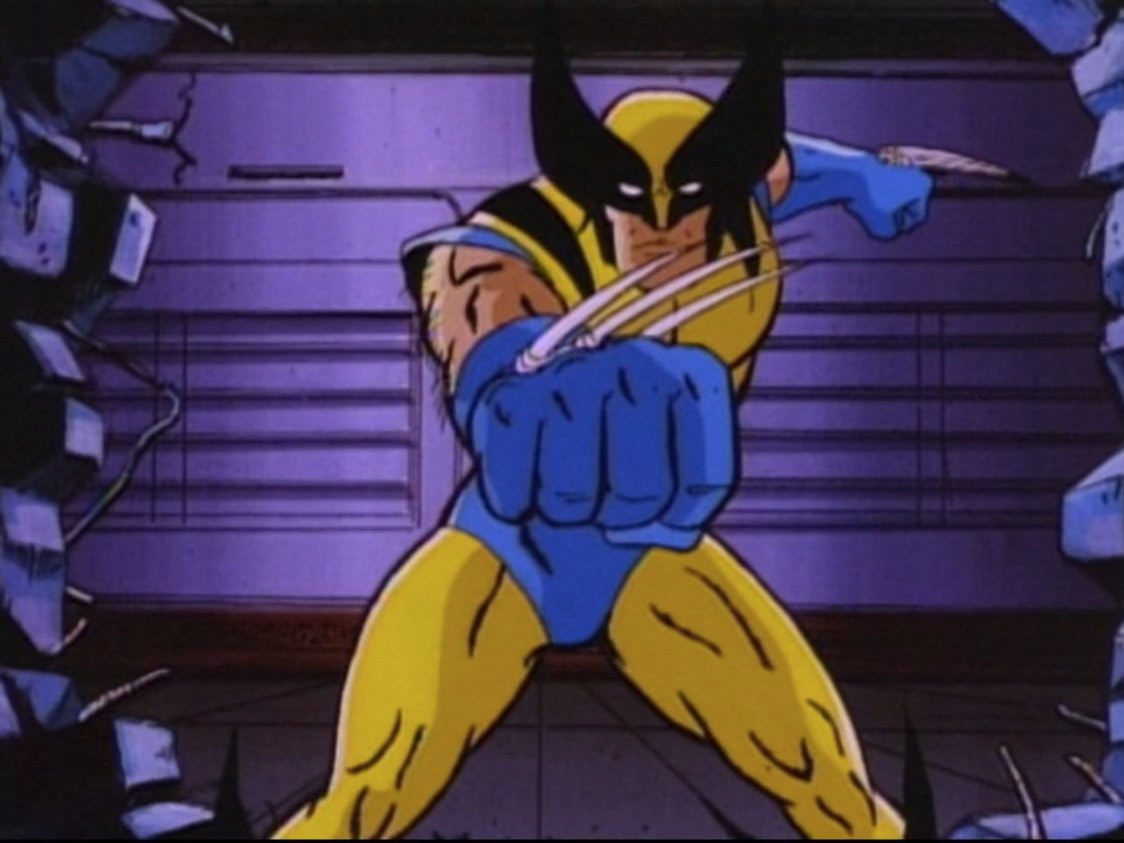
Lewald: This was Fox’s show so they were in charge of the casting. The voices were done in Canada to save money and we got to hear the top four Wolverines and Cyclopses and things like that to give our two cents. I do remember it took a long time to figure it out and, at one point, they had to recast everybody because it was all too cartoony.
George Buza (Actor, voice of Beast on X-Men: The Animated Series): We all got general audition notices from our agents saying that a particular agency was auditioning for a “Project X” — they didn’t even tell us the name of the project. However, I was familiar with the comic books, so, when I read the script, I said to myself, “This isn’t Project X, this is X-Men!” I was one of the few people who actually knew what they were auditioning for.
During my audition, I read the scene where Beast was defending himself in court and he recites the Shylock speech from The Merchant of Venice. This was a big thing for me and I had high hopes for the part, but it took a while because they had to recast everyone and I had to re-audition for the part. When I finally got the part, I was overwhelmed because this was something from my childhood and to be able to participate in it as an adult was a dream come true.

Cal Dodd (Actor, voice of Wolverine on X-Men: The Animated Series): I’d barely heard of the X-Men when I went in to audition for Wolverine. I went in and they showed me this picture of this guy who was 5’3” and built like a brick shithouse. I asked them what they think he should sound like and they said he’s a tough guy and he doesn’t take any crap. They also mentioned Clint Eastwood, so I took that and added Steve McQueen and Wolfman Jack.
My first line as Wolverine was, “Alright you egg-sucking piece of gutter trash! You always did like picking on people shorter than you, well I’m shorter, pick on me!” When I did that in the audition, they went ballistic. They said “Holy shit! Give him more lines!” Then they called me the next morning and told me I was their Wolverine.
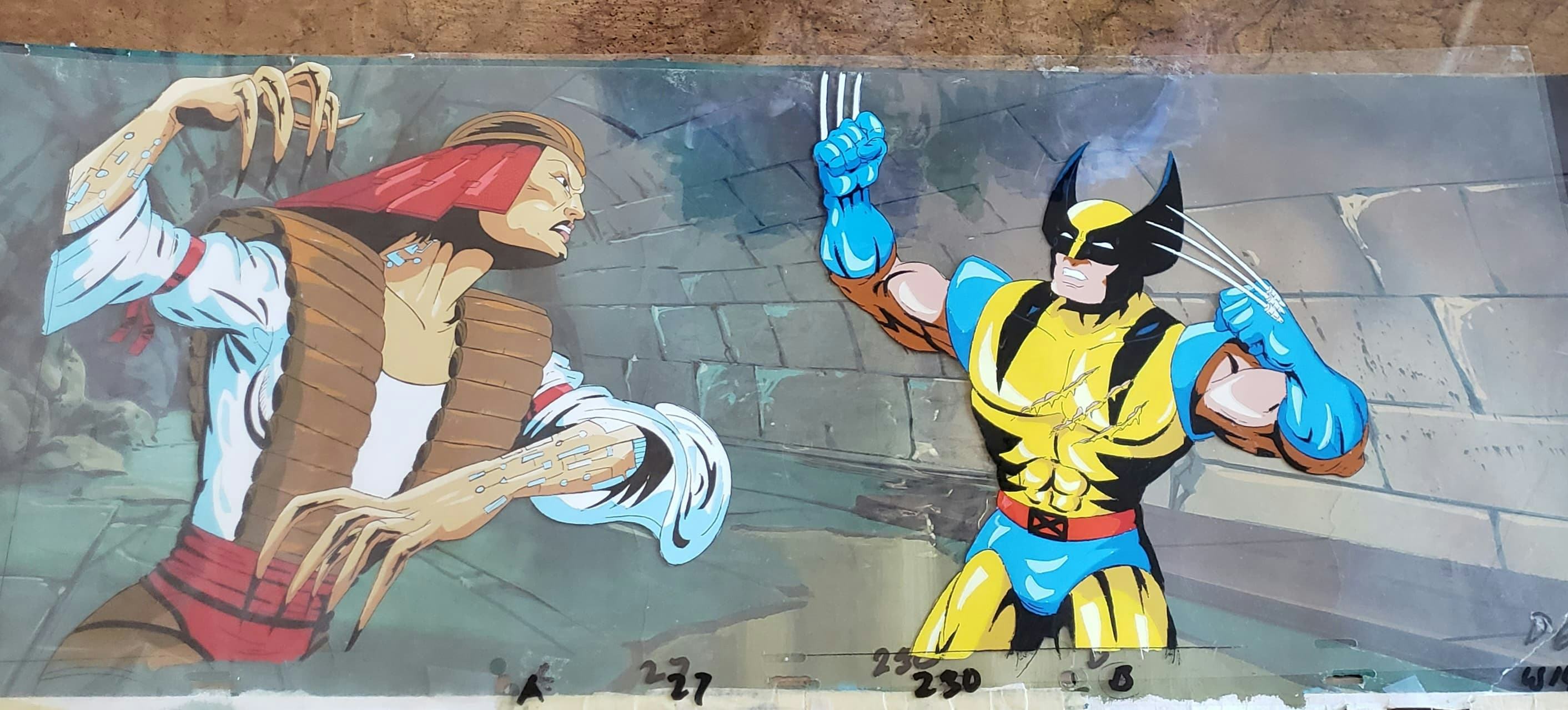
Alyson Court (actor, voice of Jubilee on X-Men: The Animated Series): Someone else had originally been cast as Jubilee, a lot of us were recasts. I remember when we were recording the pilot, we lived at that studio for two weeks. They were so specific about what they wanted. I’d just finished playing Lydia in the Beetlejuice cartoon and, every time I did a line, Sidney Iwanter would say, “This isn’t a childish Saturday morning cartoon! This is serious. Jubilee is being persecuted for being different. Do it again.” Sidney really put me through the wringer and it was great. He pushed me and we became good friends as a result.
The problem was, none of us had ever done anything like X-Men before. We were all used to doing cartoony voices and this was totally different. Nobody understood what they were trying to make because something like this had never been made before.
Composing the theme song
Ron Wasserman (Composer of the X-Men: The Animated Series theme): I didn’t know anything about the X-Men when I was asked to compose the theme song. When I came in, Ron Kenan, who was in charge of collecting royalties at Saban, had this idea for a baseline, which came from a song he’d done called “Piranha Canoe.” So I started with something similar to that baseline and added a bunch of strings and a fake guitar — I think that was the same fake guitar I used for the Power Rangers theme.
I remember it was two weeks of hell putting that song together. I kept getting notes from Sidney Iwanter saying they wanted more baseline, then more high-hats. It was a real pain in the ass to do all that back then too. It came out really great though, the theme was really catchy and interesting and it was especially interesting when they animated to it.
X-Men: The Animated Series debuts
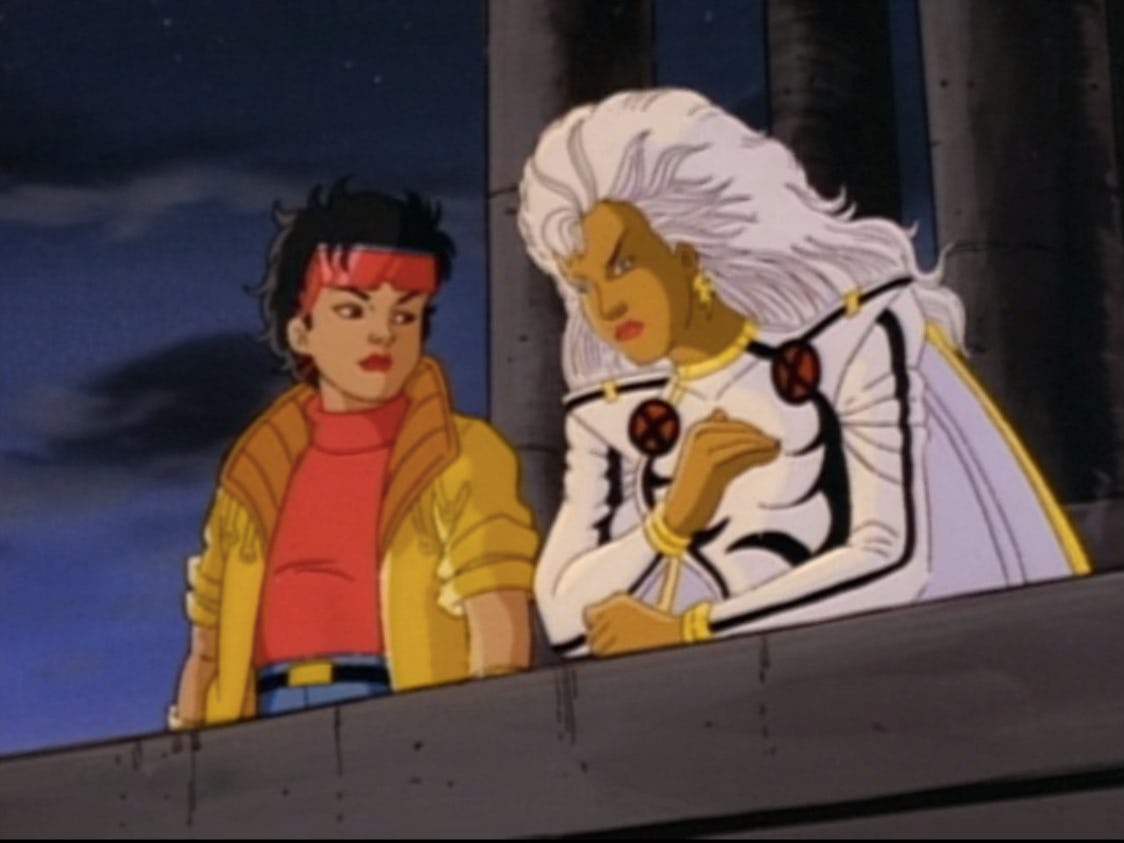
Loesch: The show didn't have the greatest production value. We didn't have the time or money that some other shows had, but the writing was so strong and the performances were so strong that when I saw those first two episodes, I honestly knew we had a hit.
But because I had that threat hanging over my head, I did everything I could to make X-Men a success. For example, there was a concern that we wouldn’t be able to hit the air dates, so I delayed the start of the show. It was supposed to debut in the fall of 1992, but I went to the advertisers and to affiliate relations and I told them that this would probably make the difference between the show being a success and a failure. So it was pushed back to January 1993. We did, however, have a sneak peek of the show beginning on October 31, 1992.
Houston: I remember we were worried because they were putting us on Halloween, a night when kids would not be home. But when we got the ratings in for part one of “Night of the Sentinels,” they were great. The kids had stayed home to watch X-Men.
Lewald: The show formally debuted in January and by the end of January, it was a killer in the ratings. By March it was getting half of the audience of all of Saturday mornings, as much as all three other networks combined.
Dodd: We never thought it'd be this big, but it took off like crazy after the first year and it went on for five years.
“The kids had stayed home to watch X-Men.”
Loesch: During my time there, I began to have regular meetings with Fox’s feature division. I went to them and told them, “You need to develop X-Men into a feature because it’s going to be a big hit and it could usher in a new age for Marvel.” Once the cartoon was a success, they listened to me and that’s what led to them making X-Men into a film.
Lewald: The reaction over the years has been pretty incredible, I've worked on 48 or 49 different series and Larry Houston has worked on 90 different series. But once in a blue moon, magic happens. If the producer had been different, if a couple of voices had been different, if the censor had been different, it may not have worked at all. But it did come together and hundreds of millions of people watched all over the world, which is incredibly humbling.
I also know that this show helped to inform the first X-Men movies, which, of course, set the stage for the MCU and all the incredible movies they’re making with Marvel characters now.







